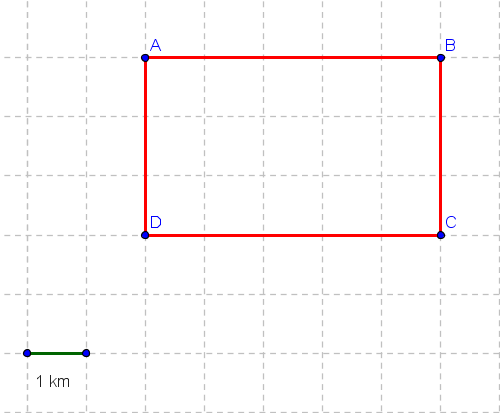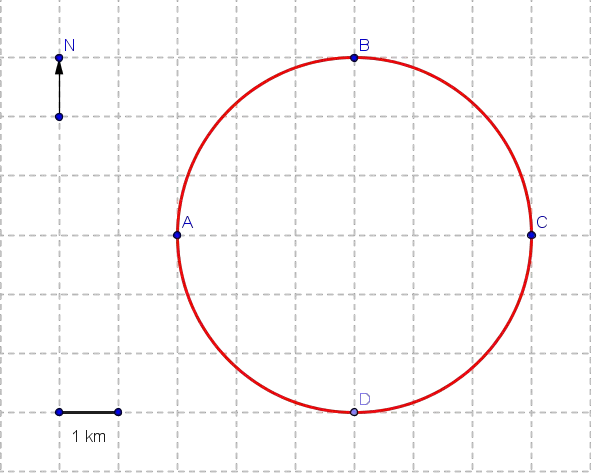
Examples with explanations on the concepts of average speed and average velocity of moving object. More problems and their solutions can be found in this website.
The average speed is a scalar quantity (magnitude) that describes the rate of change (with the time) of the distance of a moving object.
|
average speed = |
distance
time
|
The average velocity is a vector quantity (magnitude and direction) that describes the rate of change (with the time) of the position of a moving object.
|
average velocity = |
change in position
time
|
= |
displacement
time
|
An object moves from A to D along the red path as shown below in 41 minutes and 40 seconds.
a) Find the average speed of the object in m/s
b) Find the average velocity of the object in m/s

|
average speed = |
distance
time
|
= |
9 km
41 mn + 40 s
|
= |
9000 m
(41*60 + 40) s
|
= |
9000 m
2500 s
|
= 3.6 m/s |
|
average velocity = |
displacement
time
|
= |
5 km
41 mn + 40 s
|
= |
5000 m
2500 s
|
= 2.5 m/s |
The average velocity is a vector whose magnitude is 2.5 m/s and its direction is to the east.
An object moves, along a line, from point A to B to C and then back to B again as shown in the figure below in half an hour.
a) Find the average speed of the moving object in km/h.
b) Find the magnitude of the average velocity of the object in km/h.

|
average speed = |
distance
time
|
= |
13 km
0.5 hour
|
= 26 km/h |
|
average velocity = |
displacement
time
|
= |
5 km
0.5 hour
|
= 10 km/h |
An fast object moves from point A to B to C to D and then back to A along the rectangle shown in the figure below in 5 seconds.
a) Find the average speed of the moving object in m/s.
b) Find the velocity of the object in m/s.

|
average speed = |
distance
time
|
= |
16 km
5 seconds
|
= |
16000 m
5 seconds
|
= 3200 m/s |
|
average velocity = |
displacement
time
|
= |
0
5 second
|
= 0 |
A person walks, for two hours, from point A to B to C along a circular field as shown in the figure below.
a) Find the average speed of the person in km/h.
b) Find the velocity of the person.

|
average speed = |
distance
time
|
= |
3 Pi km
2 hours
|
= 1.5 Pi km/h = 4.7 km/h |
|
average velocity = |
displacement
time
|
= |
6 km
2 hours
|
= 3 km/h |

|
average speed = |
distance
time
|
= |
1.5 Pi km
1 hour + 12 minutes
|
= |
1.5 Pi km
1 hour + 12/60 hour
|
= |
1.5 Pi km
1.2 hour
|

|
average velocity = |
displacement
time
|
= |
3√2 km
1 hour + 12 minutes
|
= |
3√2 km
1.2 hours
|